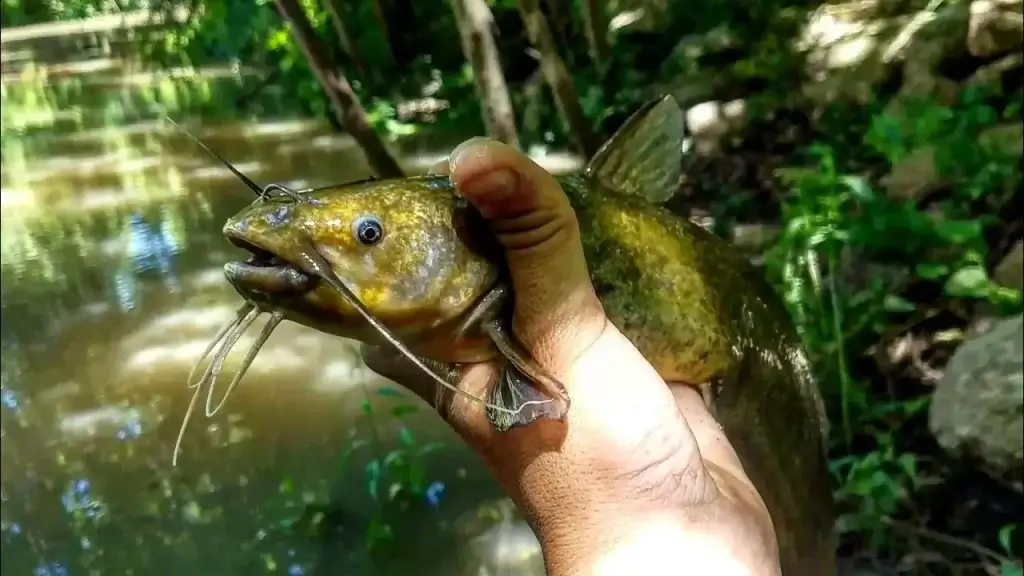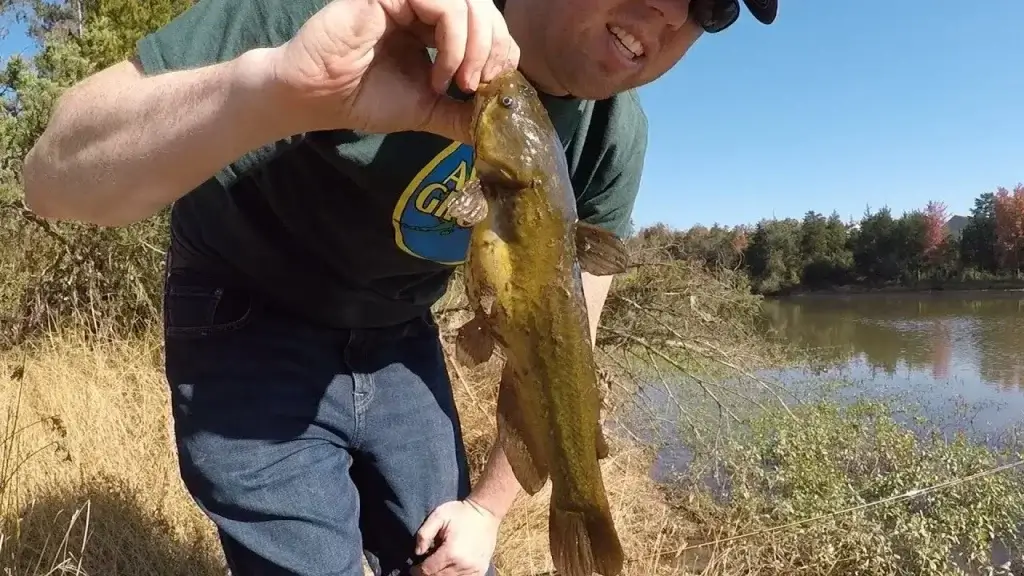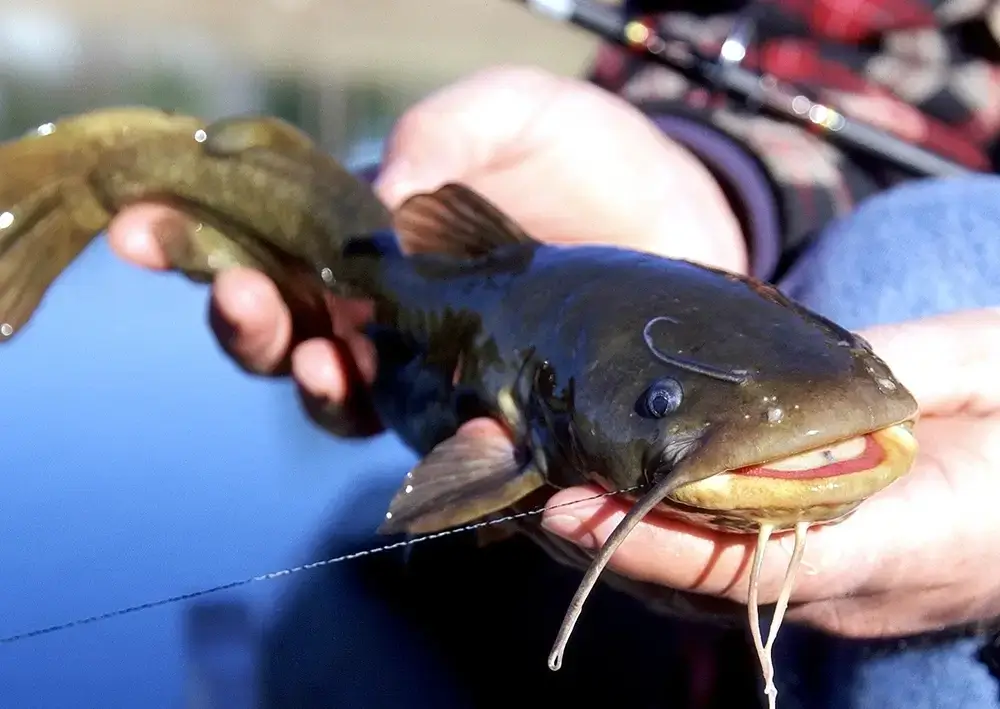Do you have a pond on your property that is plagued by bullheads? If so, you are probably looking for ways to get rid of them. Bullheads can be a nuisance because they eat the fish in your pond and transmit diseases.
This blog post will discuss how to get rid of bullheads in a pond using several different methods. We will also provide tips on how to prevent them from coming back.
What is Bullheads?
Bullheads are a type of catfish that is native to North America. They have sharp spines that can puncture your skin if you step on one or try to pick it up with bare hands.
These fish have barbels (whiskers) which help them find food in muddy waters where visibility is low, and they use their fins to move around. Bullheads can grow up to 18 inches in length and weigh up to four pounds.
Why Are Bullheads Bad for Ponds?

Bullheads can be a nuisance in ponds because they are aggressive feeders and often compete with other fish for food.
They also eat smaller fish, which can upset the pond’s natural balance. Additionally, bullheads can transmit diseases to other fish in the pond.
How to Get Rid of Bullheads in a Pond
There are several ways to get rid of bullheads from your pond. The most effective methods will vary depending on the size of your pond and how entrenched the bullhead population is:
- Electrofishing: This is a method where an electric current is passed through the water to stun the fish. The fish are then scooped up with a net.
- Poisoning: You can use commercially available poisons such as Rotenone or Diquat to kill the bullheads in your pond. Be sure to read and follow all of the instructions before using these products.
- Removal by hand: You can also remove bullheads from your pond manually with a net or trap. If you choose to do this, make sure that you have protective gear such as gloves and eye protection when handling the fish so that their spines don’t pierce your skin. It is also best to do this when the water is cold, as bullheads are less active in colder temperatures.
- Trap: You can also set a trap for bullheads. There are several different types of traps that you can use, including fyke nets, hoop nets, and conical traps.
Tips for Preventing Bullheads from Returning
Once you have removed the bullheads from your pond, there are several things that you can do to prevent them from returning.
- Keep your pond clean: Bullheads thrive in muddy waters, so keeping your pond clean will help reduce their population.
- Install a fish barrier: You can install a fence or net around your pond to stop the bullheads from getting in.
- Use a pond liner: A pond liner will help keep the water clean and reduce the amount of mud on the bottom of your pond.
- Add fish that prey on bullheads: There are several types of fish that prey on bullheads, including bass, bluegill, and sunfish. Adding these fish to your pond will help reduce the population of bullheads.
- Add plants: Bullheads like to hide in dense vegetation, so adding plants to your pond will make it less appealing to them.
If you follow these tips, you can successfully get rid of bullheads from your pond and prevent them from returning.
What Do Bullheads Eat?
Bullheads are predatory fish and can be eaten by other fish. Some fish that will eat bullheads include largemouth bass, northern pike, muskellunge, smallmouth bass, white crappie, black crappie, bluegill sunfish, redear sunfish, pumpkinseed sunfish, and catfishes.
Other animals that eat bullheads include raccoons, river otters, muskrats, and great blue herons. Snapping turtles are also known to eat bullheads as well.
If you want to get rid of the fish from your pond or lake, you can try introducing some of these species into your water body.
How Do I Stop Catching Bullheads?

There are a few different ways to stop catching bullheads in your pond. One way is to install a fish barrier. This fence-like structure goes into the water and blocks the fish from getting into the pond.
You can also use a net to catch the fish entering or exiting the pond. If you have a lot of bullheads, you might want to consider draining the pond and starting over.
If your pond has a lot of small fish and not many big ones, then it’s probably not worth trying to catch them all. Instead, you can just let nature take its course or add some bigger fish that will eat up any smaller ones that get caught in the net.
Is It Necessary to Kill Bullheads?
There is a lot of debate over whether or not to kill bullheads in a pond. Some people believe that they are an important part of the ecosystem and should be left alone, while others feel they are a nuisance and should be removed.
There are pros and cons to both sides of the argument, but ultimately it is up to you to decide what you think is best for your pond.
Do Bullheads Have the Ability to Bite?
Yes, bullheads will bite if they are hungry or feel threatened. They have sharp teeth that can cause a lot of pain, so it is best to avoid getting too close to them.
Bullheads are a type of catfish. They are small, thick-bodied, with large heads and mouths full of teeth. This group includes the yellow bullhead, brown bullhead, black bullhead, and flat balls head (also called snail cat).
Bullheads can be found in almost every freshwater habitat imaginable — ponds and lakes, rivers and streams — but they prefer slow-moving water. In addition, they are omnivorous, meaning that they eat both plants and animals.
Bullheads have venomous spines on their fins that can cause pain to anyone who comes in contact with them.
If you get one fish on your line or spear it while fishing, it is best to cut the line and release it back into the water.
Is Bullhead a Difficult Fish to Capture?
Bullheads are rough fish and other species like carp, freshwater drums, and suckers. Rough fish live in the same habitat as bass and crappie, but they do not provide catch-and-release anglers with a quality fishing experience.
Bullheads live on the bottom of lakes or ponds near submerged logs or rocks. They feed on insects, crayfish, and other small fish.
Bullheads are a common sport fish in the Midwest, but they can become a nuisance when they congregate in high numbers near fishing docks or swimming areas.
A pond or lake overpopulated with bullheads can be difficult to fish because of their aggressive behavior and tough skin.
How Can I Stock My Pond for Free?

One of the best ways to stock your pond for free is using a net. For example, you can use a landing net or a seine net.
A landing net is used to scoop fish out of the water, while a seine net is dragged through the water to catch fish. If you’re looking to stock your pond with larger fish, a seine net is the better option.
Another way to stock your pond for free is by using fish traps. There are different types of traps available, so you can choose the one that best suits your needs.
Some traps are designed to be placed in the water, and others are designed to be placed on the land. If you’re looking to catch a large number of fish, a trap placed in the water is your best option.
If you don’t want to use a net or a trap, you can also purchase fish from a local bait shop. Just make sure you get the right type of fish for your pond.
How Fast Do Bullheads Reproduce?
Bullheads reproduce rapidly, so it is important to take action quickly if you want to get rid of them from your pond. In a single year, bullheads can lay up to 500,000 eggs.
If you have a smaller pond, you may be able to remove the bullheads by hand. They are relatively easy to catch since they tend to stay near the bottom of the pond. But, again, you can use a net or grab them by hand.
Do Bullheads Eat Minnows?
Bullheads are known to feed on a variety of fish, including minnows. This can be problematic if you have a pond stocked with these smaller fish.
If you notice that the population of minnows in your pond is declining, bullheads are likely the culprits.
Is It True That Bullheads Are Blind?
Bullheads have poor eyesight and use their whiskers to navigate. Their sense of smell is also highly developed, so they rely on scent to find food. Because of this, bullheads can be difficult to remove from a pond.
What Is the Finest Bullhead Bait?
The best bait for bullheads is live bait, such as nightcrawlers, minnows, or crayfish. However, you can also use artificial lures, such as spinnerbaits or jigs.
However, be sure to use smaller lures than you would for larger fish, as bullheads are not very large fish.
If you are using live bait, use a size 12 or 14 hooks. If you are using artificial lures, use size six or eight hooks.
When casting your lure, aim for areas near the edge of the pond where the water is shallow and murky. Bullheads like to hide in these areas.
When fishing for bullheads, be patient and use a variety of baits. It is also important to fish on cloudy days or at night when fewer predators are around.
When fishing for bullheads, take care not to catch any other fish species by accident. This can lead to overfishing and endangerment of the local ecosystem.
What Is the Maximum Length of a Bullhead?
Bullheads can range from eight inches to as big as 14 inches. The average bullhead is about 12 inches long and weighs between 0.79-0.89 pounds (350-400 grams). However, the largest ever recorded was 19½” long and weighed just over two pounds (30 oz.).
The oldest bullhead ever recorded was 16 years old.
It takes bullheads four to five years before they can reproduce. Females lay between 2000 and 8000 eggs during the spawning season (June-August).
The incubation period lasts for about three months before hatching occurs in late fall or early winter.
Conclusion
If you have bullheads in your pond, how long they will stick around depends a lot on how much work you put into getting rid of them. The more effort and time you bury into it, the sooner they’ll be gone.
Not only that, but if the right techniques are used, their permanent exit can be ensured. If you’re willing to go through with the effort, there are many ways how to get rid of bullheads in a pond.
